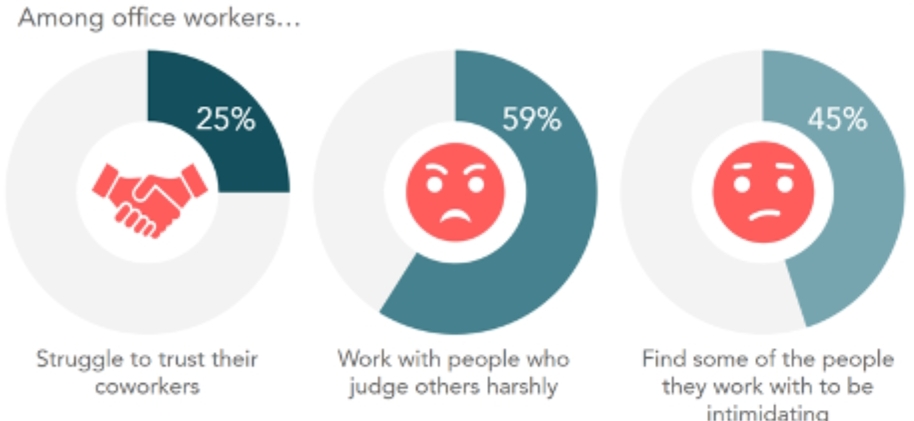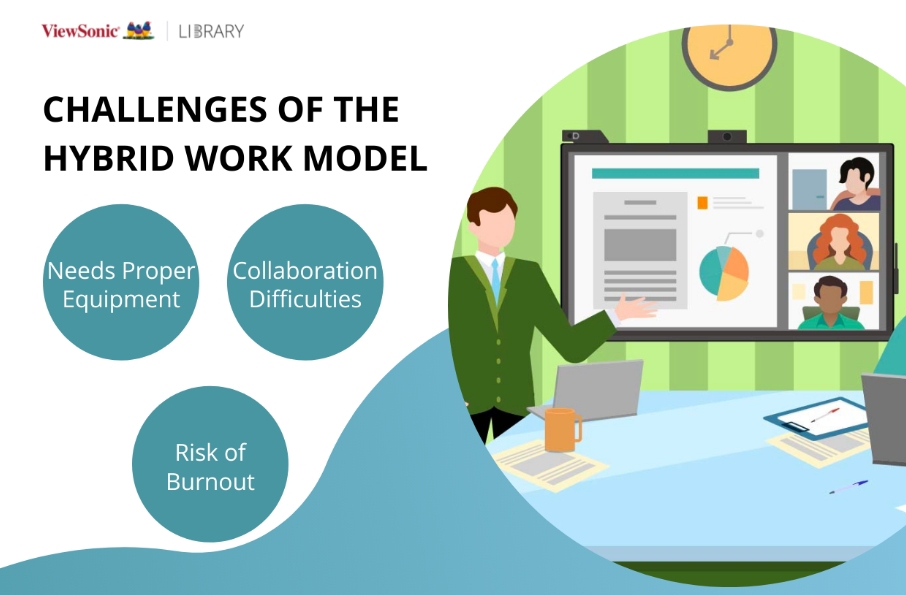The workplace landscape underwent a seismic shift in the years leading up to 2021, with the traditional office model giving way to more flexible and dynamic work arrangements. Central to this transformation was the hybrid work model, a system that blends in-office and remote work, allowing employees the flexibility to choose where they work from while maintaining productivity and engagement. The concept of hybrid work, while not entirely new, gained unprecedented momentum during the COVID-19 pandemic, forcing companies to rethink their approach to work and how they could leverage technology to support a more adaptable and resilient workforce.
The Evolution of Work Models Before 2021

Early Stages of Remote Work
The concept of remote work has been around for decades, but it was only in the early 2000s that technological advancements began to make it a viable option for a broader range of industries. The proliferation of high-speed internet, laptops, and mobile devices allowed employees to work from virtually anywhere, enabling companies to offer more flexible work arrangements. However, remote work was often seen as a perk rather than a standard practice, limited to certain roles or industries.
The Rise of Flexible Work Arrangements
As technology continued to advance, the demand for more flexible work arrangements grew. By the 2010s, companies began to experiment with different work models, including telecommuting, flexible hours, and remote work options. A 2018 survey by Global Workplace Analytics found that 70% of employees globally worked remotely at least once a week, highlighting the growing acceptance of remote work. Organizations like IBM and Dell were early adopters of flexible work models, recognizing the benefits of increased employee satisfaction, reduced real estate costs, and access to a broader talent pool.
The Hybrid Work Model Takes Center Stage
The hybrid work model, which combines remote and in-office work, emerged as a leading strategy for organizations looking to balance flexibility with the benefits of in-person collaboration. Several factors contributed to the growing popularity of hybrid work before 2021:
- Technological Advancements
The rapid advancement of technology was a key enabler of the hybrid work model. Cloud computing, collaboration tools like Slack and Microsoft Teams, and video conferencing platforms such as Zoom made it easier for teams to communicate and collaborate regardless of their physical location. These technologies allowed employees to access work files, participate in meetings, and collaborate on projects in real-time, whether they were in the office or working remotely. - Shifting Workforce Preferences
The preferences of the workforce also played a significant role in the adoption of hybrid work models. Millennials and Gen Z, who made up a growing portion of the workforce, placed a high value on work-life balance and flexibility. A 2019 study by PwC found that 64% of millennials would like the option to work from home occasionally, and 22% would prefer to work remotely full-time. These preferences led companies to rethink their work models to attract and retain top talent. - Cost Savings and Efficiency
Hybrid work models also offered significant cost savings for companies. By reducing the need for large office spaces, organizations could lower their real estate costs, utility bills, and other overhead expenses. Additionally, the flexibility of hybrid work allowed companies to optimize their workforce, reducing absenteeism and increasing productivity. A 2020 report by McKinsey & Company found that companies with effective hybrid work models could increase productivity by up to 20%. - The Impact of COVID-19
The COVID-19 pandemic in 2020 was a turning point for the adoption of hybrid work models. As lockdowns and social distancing measures forced millions of employees to work from home, companies quickly realized that remote work was not only feasible but could also be highly effective. This experience accelerated the shift towards hybrid work, with many organizations deciding to make it a permanent part of their workplace strategy. For example, in 2020, Twitter announced that employees could continue working from home indefinitely, even after the pandemic, reflecting a broader trend towards hybrid work.
Leveraging Technology to Support Hybrid Work
Implementing a hybrid work model requires a robust technological infrastructure to ensure seamless collaboration, communication, and productivity. Before 2021, several key technologies played a crucial role in supporting hybrid work:
- Cloud Computing
Cloud computing was the backbone of hybrid work, enabling employees to access work-related files and applications from anywhere. Cloud-based platforms like Google Workspace, Microsoft 365, and Amazon Web Services (AWS) allowed teams to collaborate on documents, manage projects, and store data securely in the cloud. These platforms also offered scalability, enabling companies to adjust their IT resources based on demand. - Collaboration Tools
Collaboration tools were essential for maintaining communication and teamwork in a hybrid work environment. Platforms like Slack, Microsoft Teams, and Asana allowed teams to communicate in real-time, share files, and manage projects, regardless of their location. Video conferencing tools like Zoom and Cisco Webex became indispensable for virtual meetings, enabling face-to-face communication and collaboration across different geographies. - Cybersecurity Solutions
As hybrid work became more prevalent, cybersecurity emerged as a critical concern. With employees accessing company data from various locations and devices, organizations needed to implement robust security measures to protect sensitive information. Virtual Private Networks (VPNs), multi-factor authentication (MFA), and endpoint security solutions were widely adopted to secure remote connections and prevent cyber threats. - Employee Engagement and Wellness Platforms
Hybrid work models required companies to find new ways to keep employees engaged and connected. Employee engagement platforms like Culture Amp and Bonusly provided tools for feedback, recognition, and social interaction, helping to maintain a positive work culture in a hybrid environment. Wellness platforms like Virgin Pulse and Calm also played a role in supporting employee well-being, offering resources for mental health, fitness, and stress management.
Challenges of Implementing Hybrid Work Models

While hybrid work models offered numerous benefits, they also presented several challenges that organizations needed to address:
- Managing Collaboration and Communication
One of the biggest challenges of hybrid work was maintaining effective communication and collaboration among team members who were not always physically present. Organizations needed to ensure that remote workers had equal access to information and opportunities for collaboration. This required a shift in management practices, with leaders needing to adopt more inclusive and flexible communication strategies. - Ensuring Fairness and Equity
Hybrid work models also raised concerns about fairness and equity. There was a risk that remote workers could feel isolated or overlooked compared to their in-office counterparts. To address this, companies needed to establish clear policies and practices to ensure that all employees, regardless of their location, had equal opportunities for advancement, recognition, and participation in decision-making. - Balancing Flexibility with Structure
While flexibility was a key advantage of hybrid work, too much flexibility could lead to a lack of structure and accountability. Organizations needed to find the right balance between flexibility and structure, providing employees with the freedom to choose where they work while also setting clear expectations for performance and productivity. This required effective goal-setting, regular check-ins, and performance management practices. - Adapting Leadership and Management Styles
Hybrid work also necessitated a shift in leadership and management styles. Leaders needed to develop new skills to manage teams effectively in a hybrid environment, including remote communication, digital literacy, and the ability to build trust and connection with employees who were not physically present. Training and development programs for managers became essential to help them navigate the challenges of hybrid work.
Case Studies: Early Adopters of Hybrid Work
Before 2021, several organizations were already leading the way in implementing hybrid work models:
- Microsoft
Microsoft was one of the early adopters of hybrid work, offering employees the flexibility to work from home part of the week even before the pandemic. The company leveraged its own technology, including Microsoft Teams and Azure cloud services, to support a seamless hybrid work experience. In 2020, Microsoft announced that it would allow employees to work remotely up to 50% of the time, with the option to request permanent remote work based on their role. - Salesforce
Salesforce was another company that embraced hybrid work, with a focus on creating a flexible and inclusive work environment. The company introduced the concept of “Success from Anywhere,” allowing employees to choose how, when, and where they work. Salesforce also invested in technology to support hybrid work, including collaboration tools, virtual events, and digital learning platforms. - Spotify
In 2020, Spotify announced its “Work from Anywhere” policy, allowing employees to work from any location that best suits their needs. The company provided employees with the necessary tools and resources to work remotely, including home office setups and access to collaboration platforms. Spotify’s approach to hybrid work was centered on trust and flexibility, empowering employees to manage their own work-life balance.
The Future of Hybrid Work Models Post-2021
As organizations continued to adapt to the hybrid work model in 2021 and beyond, several trends were expected to shape the future of work:
- Increased Investment in Technology
The success of hybrid work was heavily dependent on technology, and companies were expected to continue investing in tools and platforms that support remote collaboration, cybersecurity, and employee engagement. Artificial intelligence (AI) and machine learning (ML) were also likely to play a growing role in optimizing hybrid work environments, from automating routine tasks to providing data-driven insights for decision-making. - Redesigning Workspaces
As hybrid work became more prevalent, the traditional office space was likely to undergo significant changes. Companies were expected to redesign their offices to accommodate a more flexible workforce, with a focus on collaboration spaces, hot-desking, and technology-enabled meeting rooms. The office would no longer be the default workplace but rather a space for collaboration, innovation, and social interaction. - Focus on Employee Experience
Employee experience would continue to be a priority for organizations implementing hybrid work models. Companies would need to create a positive and inclusive work environment that supports the well-being, engagement, and development of all employees, regardless of their location. This would require ongoing efforts to improve communication, provide opportunities for connection, and offer resources for personal and professional growth. - Hybrid Work as a Competitive Advantage
Hybrid work was expected to become a competitive advantage for companies that could successfully implement it. Organizations that offered flexibility and work-life balance were likely to attract and retain top talent, particularly as younger generations entered the workforce. Hybrid work models also provided companies with the agility to respond to changing business conditions, making them more resilient in the face of future disruptions.
Conclusion
By 2021, hybrid work models had become a critical component of workplace strategy, driven by the need for flexibility, technological advancements, and shifting workforce preferences. The COVID-19 pandemic accelerated the adoption of hybrid work, forcing companies to rethink their approach to work and leverage technology to support a more adaptable and resilient workforce. While the transition to hybrid work presented challenges, it also offered significant benefits, including cost savings, increased productivity, and a more engaged and satisfied workforce. As organizations continued to evolve their hybrid work models, the focus was on creating a positive employee experience, investing in technology, and redesigning workspaces to support a flexible and dynamic workforce.
About Author
Kiran Kumar Reddy Yanamala is a Sr System Analyst known for enhancing HR systems with automation and innovation. Kiran hold a Master’s in Information Systems and a B.Tech in Computer Science. Kiran’s expertise in Workday development has led to significant improvements in talent management and system analysis. Kiran is recognized for the leadership and mentorship within the professional community.
References
- Global Workplace Analytics. (2018). Global Remote Work Statistics. Retrieved from Global Workplace Analytics.
- PwC. (2019). Millennials at Work: Reshaping the Workplace. Retrieved from PwC Insights.
- McKinsey & Company. (2020). The Future of Work After COVID-19. Retrieved from McKinsey Insights.
- Microsoft. (2020). Our Hybrid Workplace: Embracing Flexibility and Resilience. Retrieved from Microsoft News.
- Salesforce. (2020). Success from Anywhere: Our Vision for the Future of Work. Retrieved from Salesforce News.
- Spotify. (2020). Work from Anywhere: Embracing Flexibility in the Workplace. Retrieved from Spotify News.



